Results
-
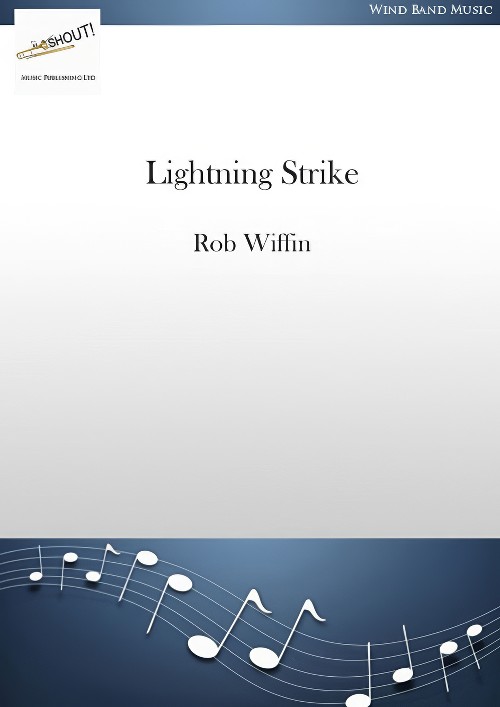 £44.95
£44.95Lightning Strike (Concert Band - Score and Parts) - Wiffin, Rob
This march was commissioned by the Royal Air Force Halton Area Voluntary Band to mark their move to Air Command at RAF High Wycombe. The compositional approach to it is reasonably conventional with echoes of the rhythmic cells of the RAF March Past but balanced with some sections imbued with rhythmic energy. There is also a typically broad trio melody which seems to be the quintessential trademark of an RAF march.Duration: 3.30
Estimated dispatch 7-14 working days
-
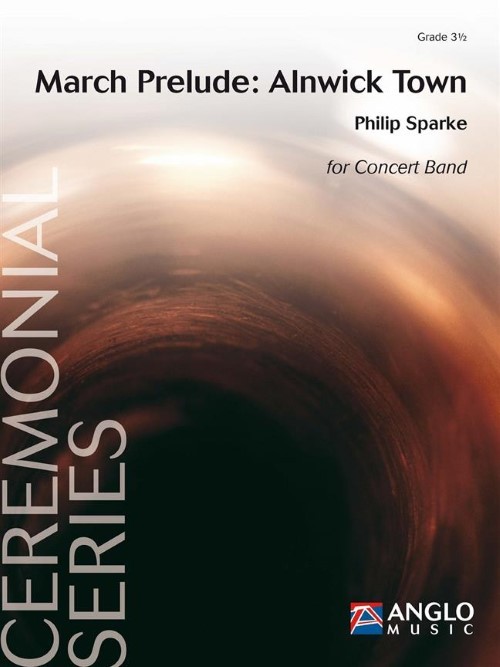 £91.99
£91.99March Prelude: Alnwick Town (Concert Band - Score and Parts) - Sparke, Philip
March Prelude: Alnwick Town was commissioned by the Alnwick Playhouse Concert Band (with Ray Thompson as conductor) to celebrate their first 25 years. It opens majestically with answering phrases between various sections of the band, leading to a faster march-like section, its main theme echoes the rhythms of the opening material. A bridge passage featuring snippets for saxophones and trumpets leads to a new theme, more legato in nature and repeated after a change of key. The bridge passage returns to herald a restatement of the main theme before the opening material reappears to close the work with a flourish.Duration: 3.45
Estimated dispatch 7-14 working days
-
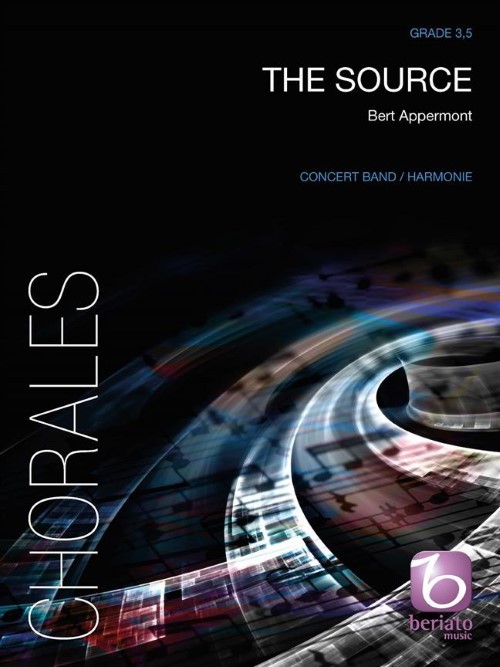 £104.99
£104.99The Source (Concert Band - Score and Parts) - Appermont, Bert
At the heart of this piece are several elements that inspired the composer. First of all: nature, infinite and inexhaustible, giving life and power, something bigger than humans can grasp. The composer used the Gregorian hymn 'Veni Creator Spiritus' as a leitmotiv to reflect this idea. A second element was the passing of David Maslanka, a dear friend of the composer, honoured in the work by a few musical 'echoes'. At the end of the work, there is a passage for optional choir in different possible settings. The Source was commissioned by the Banda Giovanlie Regionale ANBIMA FVG, Italy, and is an impressive, stirring and moving piece of music. Duration: 8.00
Estimated dispatch 7-14 working days
-
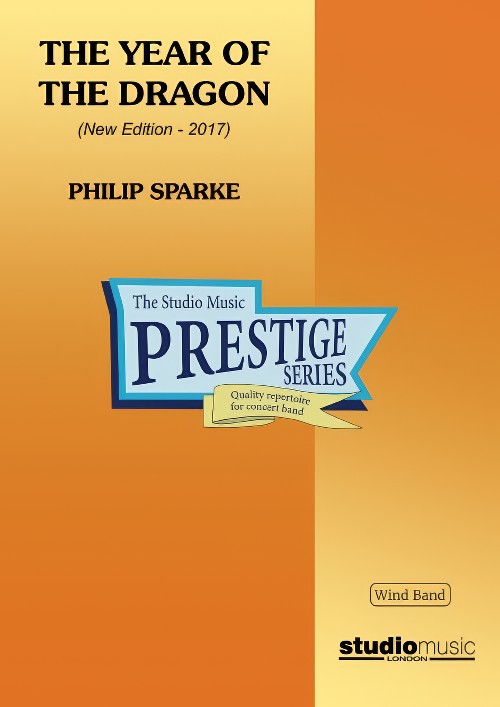 £37.95
£37.95The Year of the Dragon (Prestige Concert Band - Score only) - Sparke, Philip
The 2017 version of The Year of the Dragon was commissioned by the Siena Wind Orchestra and given its world premiere on June 17th 2017 in Bunkyo Civic Hall, Tokyo, conducted by the composer.The original wind band arrangement of The Year of the Dragon was made in 1985, a year after the composer wrote the brass band version. At that time he was still learning the intricacies of writing for wind band (and still is!) and in the 32 years which have elapsed since then, his approach to scoring for the medium has developed and, hopefully, improved.Here are the main differences between the two versions:In the 1980's, the wind band movement was much less international than it is now. British wind bands were still to some extent based on the military band tradition of the time, which tended to use rather smaller instrumentation than the then-dominant American university model. The new version embraces a much more international instrumentation, including low woodwinds and string bass, as well as an expanded percussion section.In the original version there was a touch of naivety in the way the composer wrote for the woodwinds; much of their articulation was transferred too literally from the brass version, resulting in some unidiomatic writing, which he has tried to improve in the new version.In addition to the above, Philip's own compositional style has matured and developed in the intervening 32 years. There are some passages in the original which he simply would not write today - not because they are 'wrong', but because his way of writing has changed. The new version is perhaps how he would have written it today, rather than simply dressing the original version in new clothes.The work is in three movements:Toccata opens with an arresting side drum figure and snatches of themes from various sections of the band, which try to develop until a broad and powerful theme from the middle of the band asserts itself. A central dance-like section soon gives way to the return of this theme, which subsides until faint echoes of the opening material fade to a close.Interlude takes the form of a sad and languid solo for alto saxophone. A chorale for the whole band introduces a brief spell of optimism but the saxophone solo returns to close the movement quietly.Finale is a real tour-de-force for the band with a stream of rapid semi-quavers running throughout the movement. The main theme is heroic and march-like but this is interspersed with lighter, more playful episodes. A distant fanfare to the sound of bells is introduced and this eventually returns to bring the work to a stirring close.
Estimated dispatch 7-14 working days
-
 £199.95
£199.95The Year of the Dragon (Prestige Concert Band - Score and Parts) - Sparke, Philip
The 2017 version of The Year of the Dragon was commissioned by the Siena Wind Orchestra and given its world premiere on June 17th 2017 in Bunkyo Civic Hall, Tokyo, conducted by the composer.The original wind band arrangement of The Year of the Dragon was made in 1985, a year after the composer wrote the brass band version. At that time he was still learning the intricacies of writing for wind band (and still is!) and in the 32 years which have elapsed since then, his approach to scoring for the medium has developed and, hopefully, improved.Here are the main differences between the two versions:In the 1980's, the wind band movement was much less international than it is now. British wind bands were still to some extent based on the military band tradition of the time, which tended to use rather smaller instrumentation than the then-dominant American university model. The new version embraces a much more international instrumentation, including low woodwinds and string bass, as well as an expanded percussion section.In the original version there was a touch of naivety in the way the composer wrote for the woodwinds; much of their articulation was transferred too literally from the brass version, resulting in some unidiomatic writing, which he has tried to improve in the new version.In addition to the above, Philip's own compositional style has matured and developed in the intervening 32 years. There are some passages in the original which he simply would not write today - not because they are 'wrong', but because his way of writing has changed. The new version is perhaps how he would have written it today, rather than simply dressing the original version in new clothes.The work is in three movements:Toccata opens with an arresting side drum figure and snatches of themes from various sections of the band, which try to develop until a broad and powerful theme from the middle of the band asserts itself. A central dance-like section soon gives way to the return of this theme, which subsides until faint echoes of the opening material fade to a close.Interlude takes the form of a sad and languid solo for alto saxophone. A chorale for the whole band introduces a brief spell of optimism but the saxophone solo returns to close the movement quietly.Finale is a real tour-de-force for the band with a stream of rapid semi-quavers running throughout the movement. The main theme is heroic and march-like but this is interspersed with lighter, more playful episodes. A distant fanfare to the sound of bells is introduced and this eventually returns to bring the work to a stirring close.
Estimated dispatch 7-14 working days
-
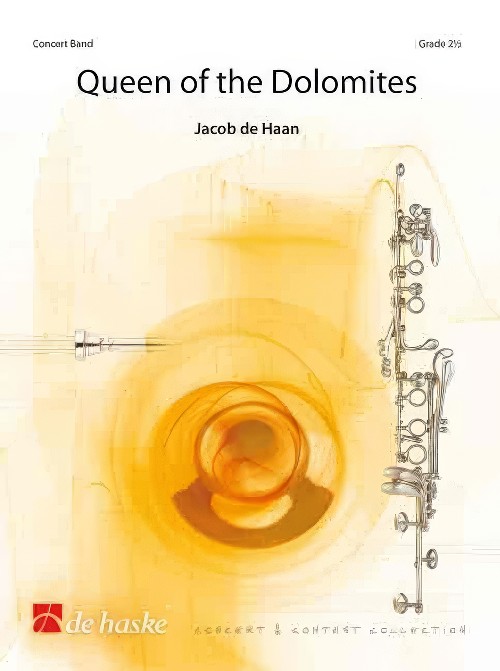 £104.99
£104.99Queen of the Dolomites (Concert Band - Score and Parts) - De Haan, Jacob
The introductory theme of this composition echoes the majestic size of the mountains that are visible from the picture-postcard Cortina d'Ampezzo, the so called "Queen of the Dolomites". Then we hear a lyrical theme, in which we feel the peacefulness of the surrounding countryside. We can even hear the hustle and bustle of the popular ski resort, before the two opening themes return in reverse order to bring this musical sight-seeing excursion to a close.Duration: 6:45
Estimated dispatch 7-14 working days
-
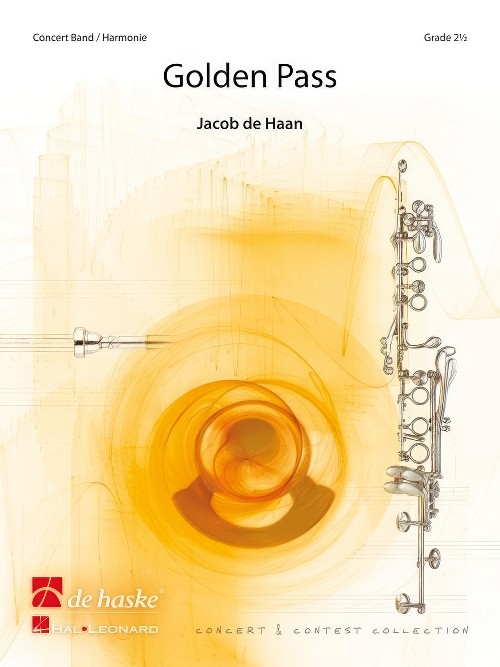 £84.99
£84.99Golden Pass (Concert Band - Score and Parts) - De Haan, Jacob
The Golden Pass is a rail line in the Swiss Alps that connects Montreux, located by Lake Geneva, to Lucerne, in central Switzerland. This composition echoes the thoughts and feelings of a passenger who watches the changing landscapes he observes on this journey: green meadows full of grazing cows and traditional chalets, beautiful mountain lakes, waterfalls and mountain tops, including the scenic Bru?ning Pass. Is this real or just a dream? We may never know!Duration: 3:00
Estimated dispatch 7-14 working days
-
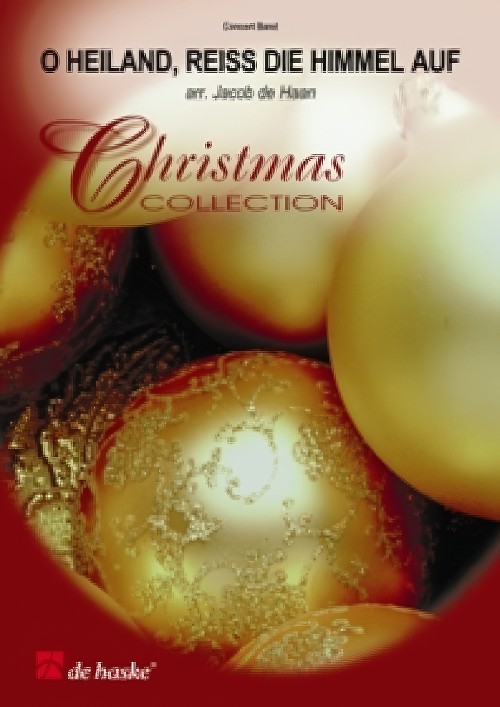 £76.99
£76.99O Heiland, Reiss die Himmel auf (Concert Band - Score and Parts) - De Haan, Jacob
O Heiland, reiss die Himmel auf (O Saviour, Rend the Heavens Wide) was written by the German poet Friedrich von Spee (1591-1635) during the Thirty Years' War. The profound text echoes the misery of that time, but at the same time reflects hope of comfort and redemption. This well-known Advent song is sung in the Catholic as well as the Protestant Church. Jacob de Haan has used the beautiful melody for this arrangement for concert band.Duration: 2:15
Estimated dispatch 7-14 working days
-
 £176.50
£176.50Masquerade (Concert Band - Score and Parts) - Sparke, Philip
Masquerade was commissioned by Stadtmusik Willisau from Switzerland (Reto Gdel, conductor) to celebrate their 175th anniversary in 2003 and first performed by them in November that year.1. Overture: The first movement opens with a fanfare-like figure, featuring the brass, before the main them is introduced over staccato chords. After a short, syncopated interlude a legato theme is introduced in the tenor register and material is developed until the music slows temporarily. The opening theme returns and the 'tenor' tune is taken up by the whole band until the opening fanfare returns to close the movement.2. Elegy: The slow movement opens intensely with a bare two-part theme, which leads to a passionate chorale-style melody. A second theme is introduced and leads to a climax, a return of the chorale theme and a pianissimo repeat which again leads to a full-band climax. The two-part theme returns quietly to create a peaceful close.3 Interlude: A short movement which changes the mood to introduce...4 Finale: Three violent chords preface a lively syncopated opening theme. The trumpets introduce a second idea, which is treated fugally, and this in turn leads to the main melodic idea of the movement, over staccato chords. A contrasting subject is then introduced in the middle of the band, followed by echoes of the first movement fanfare. The opening theme returns and material is revisited until the opening fanfare returns in full to end the work triumphantly.Duration: 15:30
Estimated dispatch 7-14 working days
-
 £57.50
£57.50Distant Thunder of the Sacred Forest (Concert Band - Score and Parts) - Sweeney, Michael
This amazing work opens with the sounds of distant villages as their drumming echoes through the African rain forests (or school gymnasium). As the players return to their "normal" seats in the band, the various elements of this composition gradually come together in a joyous unified celebration. Thoroughly researched to include authentic African patterns, Michael Sweeney has created a stunningly effective work that is playable by young ensembles. Includes performance and program notes on how to make your own percussion instruments and involve other departments in your school. Not just a piece of music...this is an event!Duration: 4:45
Estimated dispatch 7-14 working days
